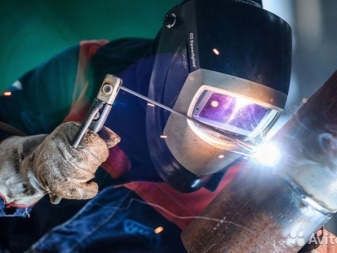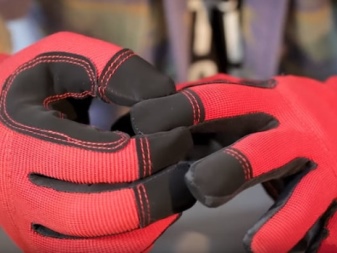Features of electrician gloves

Dielectric gloves are a must-have for any specialist who deals with electrical work and high-power electrical equipment. This applies to welders, car mechanics, machine operators and electricians. Such products will protect the skin of the hands from contact with metal under voltage.


What it is?
The work of an electrician is a deadly job that requires the strictest adherence to safety rules. Despite the fact that the equipment must be de-energized with mandatory grounding, the specialist is prescribed to work with tools with insulating handles and wear dielectric gloves. Electricians may use special electrician gloves that are protective against low voltage currents, but they are not dielectric. Such products are manufactured by the KBT plant.
The three types of gloves are made from several types of material, their purpose is as follows.
- KBT S-31 - lightweight gloves for precision work, made of polyester and elastane. It is convenient to pick up small parts in them.
- KBT S-32 - reinforced universal series, has additional protective inserts. Composition: cotton, imitation leather, PVC.
- KBT S-33 - are used to work with massive machines and heavy tools. Composition: polyester, spandex, two-layer genuine leather.



Dielectric gloves are made of thick sheet rubber or latex. They have a standard socket height of 35 centimeters and a large width that allows them to be worn on warm gloves at low temperatures. The purpose of the wide flare is to keep the sleeves of the garment inside. This eliminates the possibility of a spark hitting the body. There are few categories of dielectric gloves.
- Five-fingered, two-fingered, seamless and with a seam (danced).
- EV marking - for operation with voltages up to 1000 V, En marking - voltage over 1000 V.
In such dielectric gloves they work during electrical work, installation of electrical panels, wiring, etc. This is a guaranteed protection against electric shock.



Varieties
There are several varieties of gloves for electricians. Their main goal is to save human life from electric shock, they are all used in various types of installation and repair work.
- Heat Resistant Knitted Gloves - protect hands from thermal burns by an electric arc, short-term fire, heat radiation. They are made of heat-resistant cotton-based fabric with the addition of fire-resistant viscose or meta-aramid. They are put on under dielectric protective equipment, they are also used as an independent element of workwear.
- Rubber dielectric gloves - protect against voltages below 1000 V or above, this is indicated by the marking.
- NSKVT professional electrician gloves - S-31; S-32; S-33.


How to check the strength?
Since dielectric gloves are an important part of protecting a person from injury, and sometimes from death, regular checking of their quality is one of the most important safety factors. Even an imperceptible puncture, a tiny defect, can cost a human life. It is checked by simply twisting the glove towards the fingers - any damage becomes noticeable.
They check the protection for moisture or dirt - in this case, the products become electrically conductive, useless as a security tool.
They are disinfected or washed with soap or soda. Dry thoroughly after washing.

Safety requires laboratory testing of dielectric protectors every 6 months. There is an approved test where personal protective equipment is tested with a high voltage of 6 kV for one minute. High-quality PPE pass no more than 6 mA, otherwise they are subject to write-off.
- The gloves are immersed in a tank of water so that the edges protrude 0.5 cm above the surface. The gloves are filled with water, the protruding edges must be dry.
- There is an electrode inside the glove, it is connected to ground using a milliammeter. In this way, it is known whether the glove is passing current.
- From the transformer, the current flows through a wire connected to the water tank.
Such a check allows you to accurately determine the marriage: gloves are rejected not only if an excessive amount of current is passed, but also when the milliammeter needle vibrates. The date of the next test is marked on the product and recorded in the logbook. Protective rubber products can only be dried at room temperature, without subjecting them to additional heating.

How to use?
Personal protective equipment has repeatedly saved human lives, which proves not only their effectiveness, but also the need to comply with the rules of use. There are few of them, but they are important and have been verified by technological tests in research institutes.
- The product must have a verification stamp.
- PPE should not have mechanical damage, which can be easily checked by twisting.
- The dielectric protection must be clean and dry.
- After each use, gloves must be washed in a solution of soap or soda, then dried at room temperature.
- It is strictly forbidden to tuck the edges of the gloves.


Compliance with established regulations, choosing the right dielectric protectors can someday save the life of someone who deals with such a physical phenomenon as electricity.
This gift of nature transformed man from a user with an Archimedean lever and a propeller into an astronaut and a pilot of jet planes. But electric current remains the same deadly phenomenon, and you should never neglect the protection of your own life when working with electricity.
How to test dielectric gloves, see the video.












The comment was sent successfully.